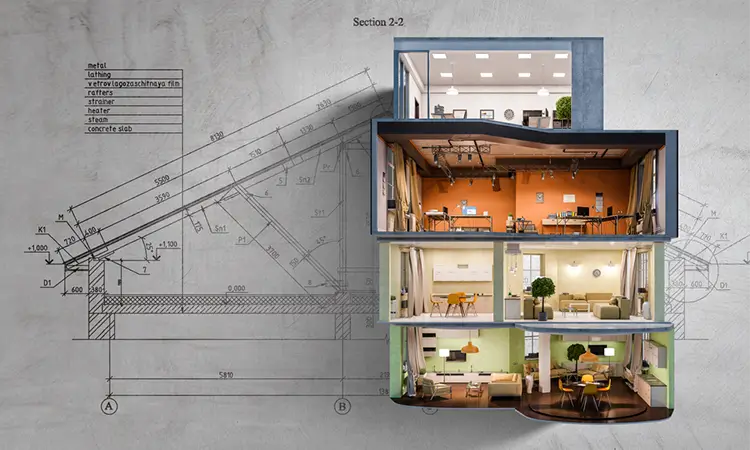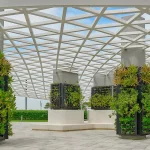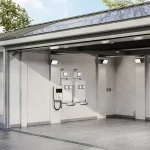The Role of Interior Design in Architectural Planning
When planning a new build, extension, or home renovation, it’s easy to focus solely on the architectural structure—walls, windows, and layout. But what truly brings a home to life is interior design. It’s where form meets function, aesthetics blend with structure, and living spaces are designed not just to look beautiful, but to enhance daily life.
At Buildrite, we believe great architecture and interior design go hand-in-hand. Whether you’re building a home from scratch or converting a loft, our integrated approach ensures that every detail—from the exterior to the interior finish—works harmoniously.
In this guide, we explore how interior design plays a crucial role in architectural planning, and how this synergy can improve your living experience and add value to your home.
How Architecture and Interior Design Work Together
Architectural planning focuses on the structure, form, and layout of a building—essentially, the bones of the space. Interior design, meanwhile, addresses how the space feels and functions inside. While they’re separate disciplines, the best results come when they’re considered together from the beginning.
Key Benefits of Integration:
- Seamless Layouts: Interior design helps guide architectural decisions on room flow, storage space, and light access.
- Consistent Aesthetic: When both teams collaborate, finishes, fixtures, and architectural details are cohesive.
- Functional Beauty: Every inch of your home is designed with purpose and comfort in mind, not just structure.
At Buildrite, our architectural and interior design teams collaborate from concept to completion, delivering spaces that feel as good as they look.
Improving Functionality Through Design
Interior design isn’t just about decoration—it’s about functionality. A beautifully designed home must also work for your lifestyle.
Examples of Functional Interior Design:
- Zoning Open-Plan Spaces: Interior designers define functional areas—kitchen, dining, living—through furniture placement, lighting, and flooring.
- Maximizing Storage: Integrated cabinetry, built-in shelving, and hidden storage solutions make homes more liveable without adding clutter.
- Ergonomics and Flow: Interior design ensures that everything is positioned for comfort—whether it’s the height of kitchen counters or the spacing of bedroom
By factoring these decisions into architectural plans early on, Buildrite ensures every space is tailored to how you live.
Selecting Materials and Finishes
Your choice of materials and finishes plays a major role in shaping the mood, quality, and longevity of your home interior. Interior designers help guide these decisions based on both style and practicality.
Key Considerations:
- Durability: Materials need to match the function of the room—water-resistant for bathrooms, hardwearing for hallways, etc.
- Aesthetic: Natural woods, polished concrete, matte metals—each creates a different
- Light Interaction: Finishes reflect or absorb light differently, impacting the brightness and tone of your home.
At Buildrite, we help clients choose finishes that match their taste and the architectural style of the home, while also factoring in budget and maintenance.
Designing for Health and Wellbeing
Modern interior design is increasingly focused on wellbeing. Your home should not only be stylish—it should nurture your mental and physical health.
Interior Design Elements that Support Wellbeing:
- Natural Light: Large windows, skylights, and reflective surfaces help boost mood and regulate sleep cycles.
- Air Quality: Proper ventilation, non-toxic paints, and natural materials reduce allergens and pollutants.
- Biophilic Design: Incorporating nature into interiors—like indoor plants, natural textures, and earthy tones—promotes calm and creativity.
- Acoustics: Sound-dampening materials help create peaceful spaces, especially in urban homes or multi-generational households.
By integrating these wellbeing principles into the architectural planning process, Buildrite creates homes that feel healthier and more comfortable.
Trends in Interior Architecture for 2025
Interior design is always evolving. Here are the top trends influencing UK homes in 2025, many of which are already being incorporated into our Buildrite projects:
1. Sustainable Materials
Eco-conscious homeowners are opting for reclaimed wood, bamboo flooring, recycled metal accents, and VOC-free paints.
2. Flexible Living Spaces
Rooms with multi-purpose furniture, sliding partitions, and convertible layouts are in demand— especially in smaller or city homes.
3. Soft Minimalism
Clean lines, neutral palettes, and uncluttered spaces are still popular—but with added warmth from natural textures and curved shapes.
4. Smart Homes
Interior layouts are now being designed to accommodate smart lighting, heating, and security systems, integrated invisibly into walls and furniture.
5. Personalized Interiors
There’s a move away from generic looks. Homeowners want interiors that reflect their personality, culture, and values—right down to custom joinery and art displays.
At Buildrite, we stay ahead of these trends while grounding our designs in timeless principles of balance, light, and form.
CTA: Explore Our Architectural & Interior Design Packages
At Buildrite, we don’t just design buildings—we design homes you love to live in. Our comprehensive packages combine architectural planning, interior design, and project management to bring your vision to life—from the first sketch to the final finish.
Explore our design packages or book a free consultation to discuss your project today.
Let’s build beautiful, functional, and healthy spaces—together.





